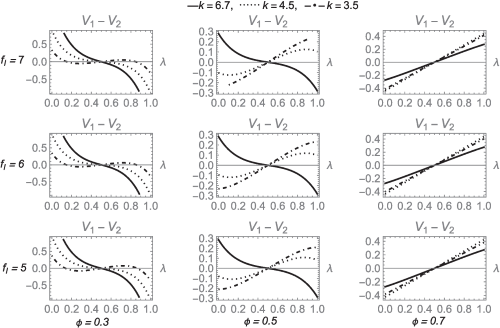Regional and urban economics employs theoretical modeling to examine how real-world factors shape regional development. These models provide a rigorous framework for evidence-based policymaking, offering insights to promote balanced economic growth and foster sustainable development.
New updates to an existing theoretical model incorporate environmental pollution and a variable called firm heterogeneity which captures productivity distribution patterns among industrial and manufacturing firms, to better analyze how industrial cluster forms, where manufacturers operate, and where workers choose to live. The model was published in the Portuguese Economic Journal on 7 March.
Industrial agglomeration describes the tendencies for manufacturing industries and workers to cluster in geographic space. This can have both positive and negative effects on region development. “Industrial agglomeration generates technological and knowledge spillover, enhances economic growth, and is considered crucial in achieving sustainable regional development. However, industrial agglomeration also may cause environmental pollution that produces negative externality and harms further agglomeration. This paper discloses the theoretical mechanism through which a change of firm heterogeneity in productivity (achieved by innovation or related policies) and environmental pollution endogenously determine the spatial equilibrium of a regional economy,” said Yiming Zhou, associate professor at the Graduate School of Humanities and Social Sciences at Hiroshima University in Hiroshima, Japan.
Zhou’s economic geography model extends the Pflüger model, a canonical model in the regional science literature. The Pflüger model used a quasi-linear upper-tier utility function to examine industrial agglomeration in the process of regional integration. The model finds that industrial agglomeration is a gradual rather than catastrophic process. Although the Pflüger model has been widely applied across various contexts, it does not account for heterogeneity in firm productivity—a factor demonstrated by recent literature to critically shape trade patterns, firm selection mechanisms, and agglomeration. By incorporating firm heterogeneity, Zhou’s model can explain how changes in firm productivity distribution and trade costs affect industrial agglomeration across regions.
This new model clarifies how changes in the distribution of firm productivity, environmental regulations, and trade costs influence industrial agglomeration and regional development. It offers a useful policy tool for governments seeking to design regional strategies that promote sustainable regional development.
Looking ahead, Zhou aims to further refine the model and enhance its applicability to real-world challenges in regional development. “The comprehensive model developed in this paper can be further applied to analyses of regional sustainable development, labor market, and growth. Future research will focus on the impact of carbon tax on spatial distribution of industries by further extending the model into a multi-region context,” said Zhou.
JSPS KAKENHI supported this research.
This paper received funding from Hiroshima University to cover open access fees.
Journal: Portuguese Economic Journal
Title: Industrial agglomeration, firm heterogeneity, and environmental pollution
Author: Yiming Zhou
DOI: 10.1007/s10258-025-00272-1

 Home
Home
















